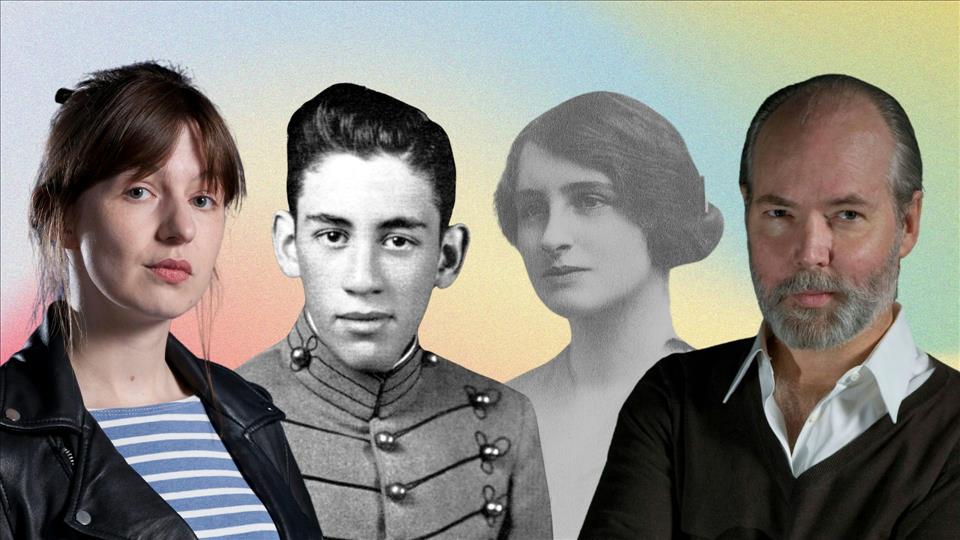
How Does Someone Become The 'Voice Of A Generation'? A Brief History Of The Concept
In 1991, Douglas Coupland's novel Generation X supposedly made him the “voice of” that generation. Looking further back, J.D. Salinger's first and only novel, Catcher in the Rye (1951), seemed to capture the voice of a generation at the time, and has resonated with successive generations of awkward and disaffected teenagers ever since.
What's behind this phenomenon is generational thinking. It seems to be everywhere at the moment, providing the media with easy taglines, spreading cliches and unnecessarily sowing division. But its history goes back far beyond even the baby-boomers.
In the 19th century, after the radical upheavals of the Enlightenment , the“age of revolutions” and the Industrial Revolution , some people wondered if perhaps they could reject tradition completely. Groups of young artists began to rebel against a model of discipleship that required them to learn from their elders.
Instead of following the art world's top-down, paternalistic apprenticeship model, these fraternities and brotherhoods (yes, they were mainly men) declared that were innovating a new dawn in art.
The Pre-Raphaelite Brotherhood , for example, now viewed as quaint, were definitely Victorian radicals , as were the impressionists 25 years later. These tight-knit groups of artists had a strong sense of generational identity, rebelling against their predecessors.
In one important way, however, they were different from the modern“voice of a generation” figures because these groups also saw themselves as rebelling against their own peers. We now might see them as iconic of their generation, but at the time, they were rejects, though elite ones – bohemian in the original sense. Crucially, they were honest about their oddity. They knew they were unusual, so they didn't claim to be speaking for everyone.
This paradox highlights one of the challenges of history: that we're understandably most captivated by people who were“ahead of their time”, but these people are therefore probably not representative of their time.
Read more: How Sally Rooney came to be dubbed the 'voice of a generation'
The origins of generational thinkingThe idea of generations as self-conscious group identities came into being with the trauma and upheaval of the first world war. Over the next couple of decades, writers who had come of age during the war narrated how it had decimated and traumatised their generation.
Examples include Erich Maria Remarque's novel All Quiet on the Western Front (1928), R.C. Sherriff's play Journey's End (1928) and Vera Brittain's autobiography, Testament of Youth (1933).
These stories all express an angry sense of having been “lions led by donkeys” . They envisage an unbridgeable divide between their own front-line generation, sacrificing its youth, and an older generation of complacent army commanders.
They also trace a second divide between themselves and the slighter younger generation who came of age after the war's end and didn't want to think about it. Brittain poignantly describes how this new fresh-faced generation experienced her grief as passé .
Vera Brittain in her English Voluntary Aid Detachment nurse uniform. GL Archive/Alamy Stock Photo
These first world war writers did consciously speak as the voice of a specific “lost generation” . But like any such label, this also obscures a more complex reality .
Not all first world war soldiers were in the first flush of youth like Wilfred Owen , Robert Graves , Remarque and Sherriff. In fact, men were recruited up to the age of 41 in Britain, 43 in Russia, 48 in France and 50 in Austria-Hungary.
As a result, between 3 million and 4 million women were widowed by the war, and between 6 million and 8 million children were left fatherless. On this reckoning, there is probably more than one first world war generation.
This complexity highlights one of the tricky things about the generations concept . It refers both to relationships within families (parents and children) and to commonalities beyond the family, among contemporaries across society. Sometimes these two dimensions align neatly, as in the“lost generation”, but sometimes they don't, like for those older soldiers who don't fit inside that label.
Why generational labels matterMy research has shown that generational ideas are real and do matter – but need to be handled with care.
Generation talk all too often slips into generalisation, which can then be used to sow division. The word “generationalism” has been coined by researchers to highlight this issue.
To counteract this, a network of researchers and third sector colleagues, led by myself and sociologist Jennie Bristow, have worked together to produce a guide entitled Talking About Generations: 5 Questions to Ask Yourself , which encourages people working with the concept of generation to pause and check their motivations and meaning before using the term.
Labels like“the voice of a generation” always depend on speculating about what other people are thinking and feeling. This risks flattening and homogenising generational experience – not all millennials are Sally Rooneys, after all.
Rooney herself has said in an interview :“I certainly never intended to speak for anyone other than myself.” Any“voice of a generation” needs, in practice, to be plural“voices”.
Looking for something good? Cut through the noise with a carefully curated selection of the latest releases, live events and exhibitions, straight to your inbox every fortnight, on Fridays. Sign up here .

Legal Disclaimer:
MENAFN provides the
information “as is” without warranty of any kind. We do not accept
any responsibility or liability for the accuracy, content, images,
videos, licenses, completeness, legality, or reliability of the information
contained in this article. If you have any complaints or copyright
issues related to this article, kindly contact the provider above.


















Comments
No comment